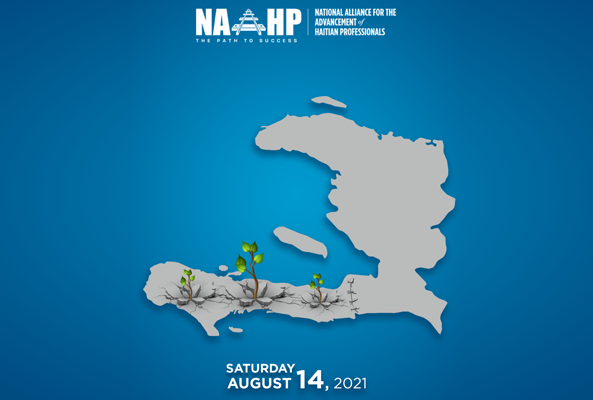
What ever happened to the Haiti Economic Recovery & Roadmap and its Implications for Haiti?
The Haiti Economic Recovery Roadmap was requested in 2009 by the Haitian government and the private sector through a Competitiveness Workgroup (Groupe de Travail sur la Competitivite) and presented to the general public August 2010. The roadmap is a series of recommendations that the government could use to improve Haiti’s competitiveness in the world markets.
I was curious to revisit this document after six years and wondered what recommendations remain valid and if entrepreneurs or investors can take advantage of them.
The Premise
The premise for the Haiti Economic Recovery & Roadmap is stated as such: “Over the course of 2009, the GC developed a “Shared Vision for a Competitive and Prosperous Haiti” (SV), a proposal for upgrading the competitiveness of the Haitian economy. This vision was anchored around five priority clusters, five cross-cutting clusters, and the following three objectives:
- Achieve financial independence: we must break the “Survival Cycle” in which we are trapped by investing in our economy and not perpetuating a handout culture.
- Promote economic inclusion: with the top 10% of society receiving nearly 50% of the country’s income, Haiti is not only poor, it is highly unequal. We must render Haiti more equitable by driving economic growth throughout the country and the creation of SMEs.
- Rebuild trust in our society: Haiti’s predatory economic model has created deep mistrust among all sectors of society. We must rebuild trust and foster partnership to rebuild.
The Priority Clusters
The roadmap clearly outlines the different clusters that Haiti should consider to improve its general competitiveness. For this post, I’ll just concentrate on the priority clusters. They are:
- High-end fruit and tubers
- Assembly
- Animal Husbandry
- Tourism
- Business Process Outsourcing
High-End Fruits and Tubers
For details on which fruits and tubers, you can refer to my posts on “Overview of the Agribusiness Industry in Haiti”. In the document they recommend a series of initiatives that the government or/and the private sector could take on:
- Establish a guarantee fund for those products. Right now no one is doing that. There are some USAID grant programs but the plan is to facilitate credit access for these potential start-ups.
- Launch series of seminars with financiers for these type of products. To my knowledge, no one is doing that. Those are opportunities that international experts can tackle as well.
There are other recommendations but working on these ones already can make a significant difference. All it takes is the expertise that no one is providing right now.
Assembly
More than 90% of Haiti’s exports. This was not by chance. you can find more details on my post on “Overview of the Apparel Industry in Haiti”. Several recommendations are highlighted; to name just a few:
- Establish 3 new industrial parks including investment or operating incentives. Caracol Industrial Park has been operating since 2012. Port Lafiteau just started in 2015 and there is another industrial park in Carrefour, Port-au-Prince. So this is one of the recommendations that has been diligently followed. This opens up other opportunities (although mostly for Asian firms).
- Support the establishment of full-service product development firms. Currently, a small number of companies are engaged in this activity but the opportunities are numerous especially when one takes the HOPE law under consideration. Proximity to the US, new training centers, new tax incentives are all competitive advantages that new companies can benefit from Haiti.
Most of the recommendations for this sector are currently being pursued but there is still a lot to do. Savvy entrepreneurs can definitely position themselves to benefit more.
Animal Husbandry
We are talking about goats, cows, chicken, fish, and bees. There are plenty of recommendations from the OTF group for example:
- Invest in one meat processing facility. Right now we have slaughterhouses and not a well-maintained meat processing facility that can positively impact our meat quality.
- Invest in 25-50 new dairy cooperatives and familial dairy production support. Only one organization is doing that and it would benefit from having their program expanded. Since Haiti can’t produce its own milk, we are forced to import.
- Invest in 20 new aquaculture farms. To my knowledge, there might be two or three successful ones. The country needs more of them.
and the list goes on.
Tourism
In recent years, Haiti made great inroads into that sector (for its potential, you can go read my post on “Overview of the Tourism Industry in Haiti”). There are still things we need to do and can exploit to our advantage according to the roadmap.
- Improve legal framework for surrounding property and condo ownership. The law has been voted. Savvy entrepreneurs are now taken advantage of this to rent and sell condos in Port-au-Prince now but Cap in the future.
- Create a website for La Citadelle. Why? well, it needs to be promoted on a regular basis and not just only through agencies or national media. Nobody has done it. Other sites could also benefit from more promotion.
- Invest in the development of 500 – 1000 new medium to high-end hotel rooms. Marriot is there. Best Western is there. More high-end hotels are opening up in Cap. American Airlines has direct flights in Cap-Haitien. There is still room (no pun intended) for savvy entrepreneurs.
and the list goes on… (starting to get tired)
BPO (Business Process Outsourcing)
I can talk about Digicel, Comphaiti and Contact Center Plus to name a few from the many that are currently operating in Haiti but I won’t. I prefer to highlight the achievement of a vocational school that made an agreement with a multinational firm to handle their invoices. The workers/students are making close to US$300 per month in a country where the monthly income is US$30-50. So what were the recommendations from the Competitiveness Group:
- Launch seminar series with local financiers on the BPO sector and Opportunities in Haiti. Nobody is doing that but the companies are not waiting and getting financing through their orders.
- Organize a mini trade show allowing local service providers to showcase their capabilities. Event planners are welcome to pitch their ideas.
- Lobby for the Rapid Completion of the Fiber Optic Network. An international telecommunications company is offering Fiber Optic networking capabilities.
and the list goes on.
I believe that the Haiti Economic Recovery and Roadmap is a well designed and very practical document. Government institutions have used it to see what type of programs they could offer. International organizations have also look into it for future donor based programs. Savvy entrepreneurs and investors are already investing in those new sectors and exploring other possibilities. We have not even talked about the cross cutting sectors like Construction and ICT technology possibilities mentioned in the document.
This shows that while Haiti is plagued by political instability, bad press and sometimes plain ignorance, there are still interesting opportunities that can be exploited.
So look at it again but this time talking to those who are succeeding and engage in new sectors and ask them what are they doing differently and you will realize that Haiti IS open for Business.

 English
English Français
Français Donate
Donate Partner
Partner Shop
Shop Login
Login










